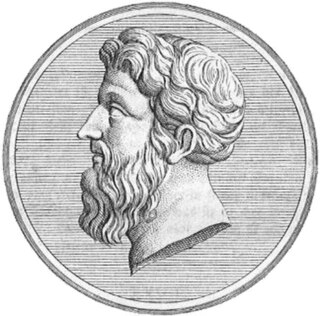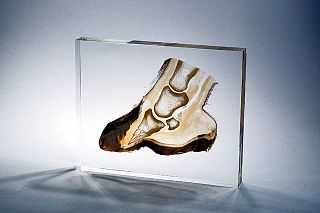 W
WDeath is the permanent, irreversible cessation of all biological functions that sustain a living organism. Brain death is sometimes used as a legal definition of death. The remains of a previously living organism normally begin to decompose shortly after death. Death is an inevitable, universal process that eventually occurs in all living organisms.
 W
WAnticipatory grief refers to a feeling of grief occurring before an impending loss. Typically, the impending loss is the death of someone close due to illness. This can be experienced by dying individuals themselves and can also be felt due to non-death-related losses like a scheduled mastectomy, pending divorce, company downsizing or war.
 W
WApparent death, colloquially known as playing dead, feigning death, or playing possum, is a behavior in which animals take on the appearance of being dead. It is an immobile state most often triggered by a predatory attack and can be found in a wide range of animals from insects and crustaceans to mammals, birds, reptiles, amphibians, and fish. Apparent death is also referred to as thanatosis, animal hypnosis, immobilization catatonia, or tonic immobility, the latter of which is preferred in the scientific literature on the subject. Apparent death is separate from the freezing behavior seen in some animals.
 W
WConsciousness after death is a common theme in society and culture in the context of life after death. Scientific research has established that the mind and consciousness are closely connected with the physiological functioning of the brain, the cessation of which defines brain death. However, many believe in some form of life after death, which is a feature of many religions.
 W
WThe Latin phrase De mortuis nihil nisi bonum "Of the dead, [say] nothing but good", abbreviated as Nil nisi bonum, is a mortuary aphorism, indicating that it is socially inappropriate to speak ill of the dead as they are unable to justify themselves.
 W
WDeath and adjustment hypotheses (DAH) is a theory about death and dying that focuses on death anxiety and adjustment to death. It was presented by Mohammad Samir Hossain as an answer to the overwhelming anxiety and grief about death. In an attempt to find the resolution to death anxiety, predominantly the existential one, DAH postulates two key themes. Its first part postulates that death should not be considered the end of existence and the second part emphasizes that the belief in immortal pattern of human existence can only be adopted in a morally rich life with the attitude towards morality and materialism balanced mutually.
 W
WIn classical Freudian psychoanalytic theory, the death drive is the drive toward death and destruction, often expressed through behaviors such as aggression, repetition compulsion, and self-destructiveness. It was originally proposed by Sabina Spielrein in her paper "Destruction as the Cause of Coming Into Being" in 1912, which was then taken up by Sigmund Freud in 1920 in Beyond the Pleasure Principle. This concept has been translated as "opposition between the ego or death instincts and the sexual or life instincts". In Pleasure Principle, Freud used the plural "death drives" (Todestriebe) much more frequently than the singular.
 W
WNon-avian dinosaur and bird fossils are frequently found in a characteristic posture consisting of head thrown back, tail extended, and mouth wide open. The cause of this posture—sometimes called a "death pose"—has been a matter of scientific debate. Traditional explanations ranged from strong ligaments in the animal's neck desiccating and contracting to draw the body into the pose, to water currents arranging the remains in the position.
 W
WDeath trajectory refers to the pattern of dying when a patient is given a projected death date with limited or no medical recourse for the remaining existence of the individual's life. The death trajectory is dependent on the cause of death, whether it is sudden death, chronic illness, or the steady decline in health due to senescence (aging). Death trajectory is analyzed in two separate aspects: duration and shape. Duration refers to the period of time a patient has to live, which can be anywhere from imminent death to several months. Shape refers to how that duration is then graphed. In other words, the shape is "the course of dying, its predictability, and whether death is expected or unexpected".
 W
WDeathbed phenomena refers to a range of experiences reported by people who are dying. There are many examples of deathbed phenomena in both non-fiction and fictional literature, which suggests that these occurrences have been noted by cultures around the world for centuries, although scientific study of them is relatively recent. In scientific literature such experiences have been referred to as death-related sensory experiences (DRSE). Dying patients have reported to staff working in hospices they have experienced comforting visions.
 W
WDeathcare is the planning, provision, and improvement of post-death services, products, policy, and governance. Here, deathcare functions to describe the industry of deathcare workers, the policy and politics surrounding deathcare provision, and as an interdisciplinary field of academic study.
 W
WEternal youth is the concept of human physical immortality free of ageing. The youth referred to is usually meant to be in contrast to the depredations of aging, rather than a specific age of the human lifespan. Eternal youth is common in mythology, and is a popular theme in fiction.
 W
WIncorruptibility is a Roman Catholic and Eastern Orthodox belief that divine intervention allows some human bodies to avoid the normal process of decomposition after death as a sign of their holiness. Bodies that undergo little or no decomposition, or delayed decomposition, are sometimes referred to as incorrupt or incorruptible.
 W
WMortality displacement is a phenomenon where a period of excess deaths is followed by a period of mortality deficit. It is also known as "harvesting". It is usually attributable to environmental phenomena such as heat waves, cold spells, epidemics and pandemics, especially influenza pandemics, famine or war.
 W
WMortality salience is the awareness by individuals that their death is inevitable.
 W
WDeath is the permanent, irreversible cessation of all biological functions that sustain a living organism. Brain death is sometimes used as a legal definition of death. The remains of a previously living organism normally begin to decompose shortly after death. Death is an inevitable, universal process that eventually occurs in all living organisms.
 W
WA pest house, plague house, pesthouse or fever shed was a type of building used for persons afflicted with communicable diseases such as tuberculosis, cholera, smallpox or typhus. Often used for forcible quarantine, many towns and cities had one or more pesthouses accompanied by a cemetery or a waste pond nearby for disposal of the dead.
 W
WDeath is the permanent, irreversible cessation of all biological functions that sustain a living organism. Brain death is sometimes used as a legal definition of death. The remains of a previously living organism normally begin to decompose shortly after death. Death is an inevitable, universal process that eventually occurs in all living organisms.
 W
WPlastination is a technique or process used in anatomy to preserve bodies or body parts, first developed by Gunther von Hagens in 1977. The water and fat are replaced by certain plastics, yielding specimens that can be touched, do not smell or decay, and even retain most properties of the original sample.
 W
WThe sociology of death explores and examines the relationships between society and death.
 W
WTaphophobia is an abnormal (psychopathological) fear of being buried alive as a result of being incorrectly pronounced dead.
 W
WTerror management theory (TMT) is both a social and evolutionary psychology theory originally proposed by Jeff Greenberg, Sheldon Solomon, and Tom Pyszczynski and codified in their book The Worm at the Core: On the Role of Death in Life (2015). It proposes that a basic psychological conflict results from having a self-preservation instinct while realizing that death is inevitable and to some extent unpredictable. This conflict produces terror, which is managed through a combination of escapism and cultural beliefs that act to counter biological reality with more significant and enduring forms of meaning and value.
 W
WThe thanatotranscriptome denotes all RNA from the transcript of the part of genome still active or awakened in the internal organs of a dead body for 24 to 48 hours following the time of the death. ·
 W
WA wreath is an assortment of flowers, leaves, fruits, twigs, or various materials that is constructed to form a ring.